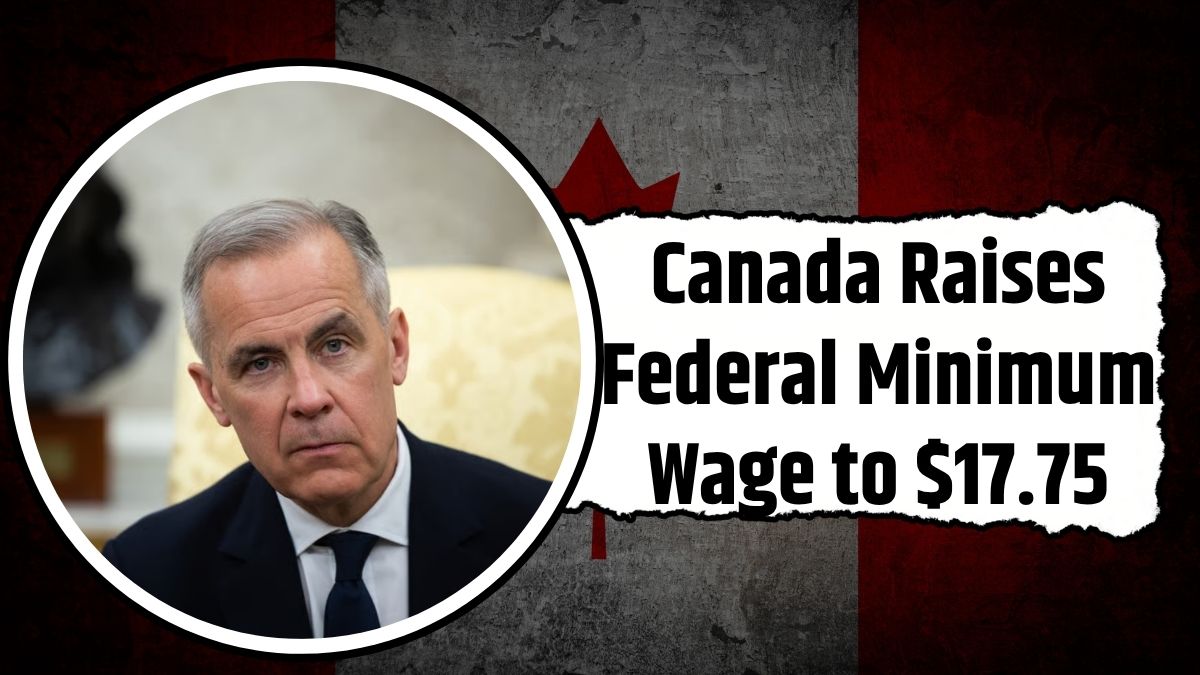As of July 19, 2025, Canada’s federal minimum wage has officially increased to $17.75 per hour, up from the previous $17.30. This change reflects the rising cost of living and is aimed at providing better financial support to workers in federally regulated industries. For thousands of employees—and especially for Indian immigrants working across sectors like transport, telecom, and banking—this modest boost translates into higher income, greater security, and stronger economic inclusion.
Why the Minimum Wage Is Being Raised
This increase is part of the federal government’s annual wage adjustment policy, which ties wage hikes to inflation trends measured by the Consumer Price Index (CPI). While most Canadian workers are covered under provincial wage laws, this specific increase impacts more than 30,000 employees working in sectors under federal regulation.
What’s Changing: Key Details of the 2025 Wage Hike
| Aspect | Details |
|---|---|
| New Federal Minimum Wage | $17.75/hour |
| Effective Date | July 19, 2025 |
| Who Must Comply | Employers in federally regulated sectors |
| Affected Industries | Banking, telecom, postal services, transport |
| Provinces with Higher Wages | Yukon: $17.94, Nunavut: $19.00 |
| Adjustment Frequency | Annually, every 19 July |
Who Does This New Wage Apply To?
The updated $17.75/hour federal rate automatically applies to employees in federally regulated industries, including:
- Banking and financial institutions
- Postal and courier services
- Telecommunication companies
- Rail, air, road, and marine transportation between provinces
If you’re employed in any of these sectors, your new wage rate should be reflected in your pay starting July 19, 2025.
How Many People Benefit from the Raise
Roughly 30,000 workers across Canada are expected to benefit directly from this federal increase. The rule covers full-time, part-time, and temporary employees, ensuring that employers across regulated industries update payrolls accordingly—regardless of employment type or length of service.
1. Boost in Monthly Earnings
For those working 40 hours a week, the new rate means an additional $93 per month, compared to the previous $17.30/hour. That extra cash can help cover essential expenses like groceries, transportation, or school costs.
2. Improved Financial Stability
Higher wages offer a stronger safety net, especially for immigrants settling in Canada. With increased income, it becomes easier to handle monthly bills, rent, and emergency expenses.
3. Better Quality of Life
More money means better housing options, access to services, and less day-to-day financial stress, making it easier to focus on long-term goals like saving or investing.
4. Increased Economic Participation
Higher wages lead to more local spending, larger tax contributions, and a stronger role in community growth, especially in urban centers where many Indian immigrants live and work.
Regional Wage Comparisons: Who Gets More?
While the new federal wage sets a national standard, some provinces and territories already have higher minimum wages. Here’s how the $17.75 federal rate stacks up:
| Region | Minimum Wage (as of July 2025) |
|---|---|
| Federal | $17.75/hour |
| Yukon | $17.94/hour |
| Nunavut | $19.00/hour |
| British Columbia | Expected increase later in 2025 |
| Ontario | Varies by job; some below $17.75 |
| Quebec | Typically lower than federal rate |
Remember: If your province or territory has a higher wage than the federal minimum, your employer must pay you the higher local rate.
Are You Being Paid Fairly? Here’s How to Check
Worried you’re not getting the updated rate? Use this checklist to make sure your pay is accurate:
1. Know Your Industry
Make sure your job falls under federal jurisdiction. If you’re in sectors like transport, banking, or telecom, you likely qualify.
2. Review Your Pay Stub
After July 19, check if your hourly wage has increased. Multiply your total hours by $17.75 and compare it with your gross earnings.
3. Check for Regional Variance
If you live in Yukon or Nunavut, your wage should reflect your provincial minimum, which is higher than the federal rate.
4. Take Action If Needed
If your pay hasn’t changed, speak with your HR department or employer. If that doesn’t resolve the issue, you can file a formal complaint with your local labor standards office.
Understanding the Dual Wage System in Canada
Canada operates on a dual minimum wage system—federal and provincial. If you work in a federally regulated job, you’re entitled to either:
- The federal minimum wage, or
- Your provincial/territorial wage, whichever is higher
This ensures that workers in federal industries are not left behind, especially when inflation impacts different regions in different ways.
Why This Increase Matters Now
The raise to $17.75/hour comes at a time of economic recovery and rising living costs. By aligning wages with inflation metrics, the federal government aims to help workers maintain real purchasing power and avoid wage stagnation. It also signals a continued commitment to protecting workers in key national sectors.
For many immigrants and regulated-sector employees, this adjustment is a meaningful financial step forward—however modest—toward a more equitable work environment.







